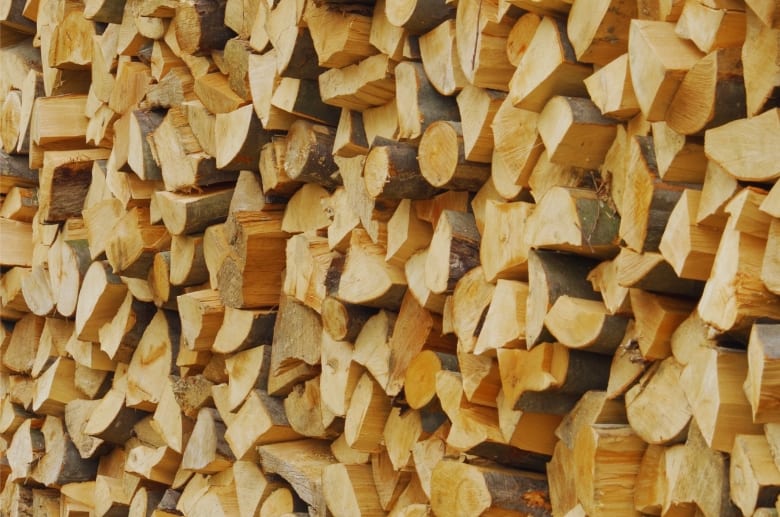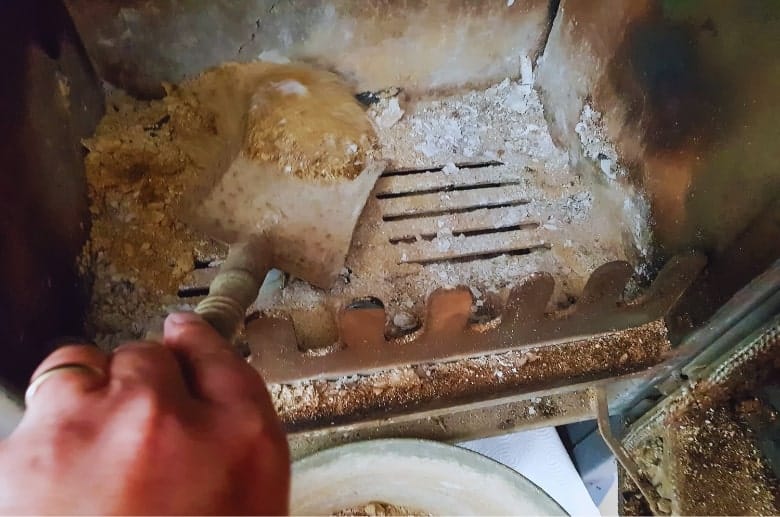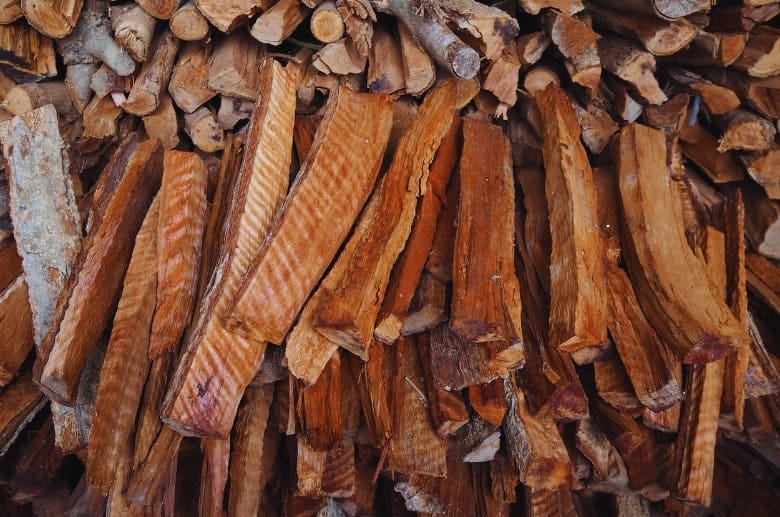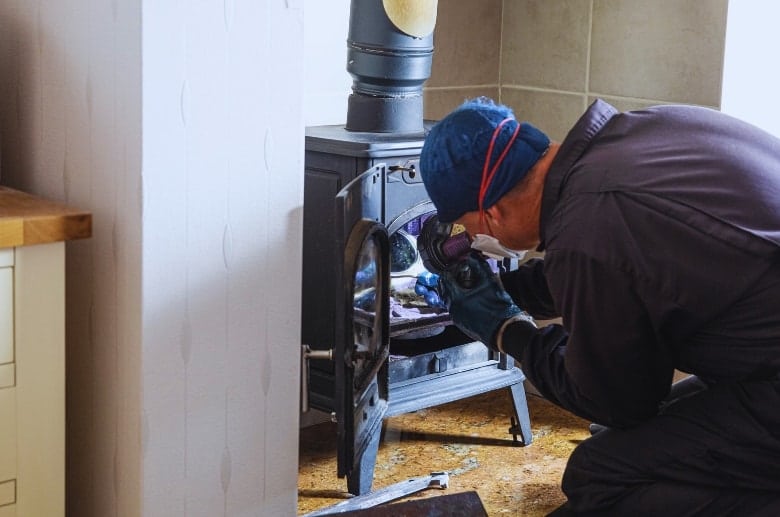The weird, black substance you often see inside your wood stove is creosote. It forms as a result of burning organic material and is highly flammable. At temperatures over 451 degrees Fahrenheit, creosote can ignite and cause chimney fires that can spread throughout the house.
The temperature inside a chimney can reach up to 480 degrees Fahrenheit – more than high enough to start a fire. So the question arises: how to avoid creosote buildup in wood stoves?
How to Avoid Creosote Buildup In Wood Stoves?
Here are the top 6 expert-recommended tips to effectively avoid creosote buildup in wood stoves, ensuring the safety and longevity of your heating system.
Tip #1 Burn Properly Seasoned Firewood

Homeowners may select green (unseasoned) wood, thinking it’s best for warming up their living room. But the opposite is true. Unseasoned wood has a high moisture content. Woods with higher levels of moisture are difficult to burn because a lot of the heat from the fire goes into burning off the moisture. Since there isn’t enough heat, the wood doesn’t burn properly.
This inadequate combustion leads to unburnt residue and more smoke. The unburnt wood subsequently transforms into creosote and sticks to the interior surfaces of the chimney.
This is why selecting the right wood is crucial if you want to prevent creosote buildup.
Always go for seasoned (dry) firewood. It has a low moisture content (less than 20%). Therefore, proper combustion occurs, producing less smoke and creosote.
You can purchase seasoned firewood or you can season it yourself. To season firewood yourself:
- Cut and split the wood such that it can fit properly into your stove.
- Stack the wood such that the cut-end is exposed (facing the wind) and there is enough space between logs for wind crossing.
- Keep the wood stack under the sun (don’t cover it).
- Leave it for up to six months (some types of wood may take longer) for the sun to dry out the moisture and the wind to whisk it away.
Whether you’re purchasing or seasoning firewood yourself, you need to know whether the firewood is seasoned. For that, check the ends. If they are dark and cracked, that means the firewood is properly seasoned.
You can also purchase a moisture meter (costs $20-50) to check the moisture level in the wood.
Tip #2: Keep Your Wood Stove Clean

A dirty wood stove is like a time bomb. You never know when it will go off and cause a fire. Would you expose your family to a threat like that?
Creosote buildup is natural. When you burn organic material (such as wood or coal), some remains unburnt, producing creosote that builds up in your chimney. Over time, the creosote accumulates to a dangerous level if you don’t clean your stove regularly.
Since creosote is highly flammable, an uncleaned wood stove is likely to catch fire and spread to nearby areas.
Moreover, the creosote build-ups can often become large enough to block the chimney. This blockage prevents proper airflow and wood combustion, resulting in more creosote. A clogged wood stove also costs more to operate since you will need more wood to maintain a high level of heat.
If you don’t want to hire professional cleaning services, here’s how you can clean your wood stove:
- Wait at least 12 hours before you start cleaning. Let the wood stove cool off completely to avoid getting hurt.
- Wear protective gloves, a mask, and safety glasses to protect yourself.
- Use a shovel to scoop up the debris and ash from the stove.
- Use a stiff brush to remove creosote from the inside of the wood stove.
- If the creosote is more rigid than the stiff brush, you may need to use a creosote remover (suitable for your wood stove). It will penetrate the creosote and help you clean it away.
- Clean your wood stove once a month (especially during colder seasons).
——
Do You Need to Hire Chimney & Fireplace Expert?
Get free quotes from qualified experts near you. No commitment required!
——
Tip #3 Use Smaller Pieces of Wood

Using smaller pieces of wood is better than stuffing your wood stove with large chunks. Smaller pieces ignite quickly, resulting in less smoke. They are also easy to work with. On the other hand, large pieces of wood take a lot of time to catch fire, producing a lot of smoke and unnecessary creosote buildup in your wood stove.
Another benefit of using smaller pieces of wood is that they burn better and more efficiently. This produces less creosote as small pieces burn completely and regulate the wood stove’s temperature.
To cut wood, you may require a splitting block and an ax. Here’s how to do it:
- Cut wood in the early spring months to allow maximum drying (if you use unseasoned firewood).
- Cut the ends of the wood in a flat, square shape so they can firmly stand on the splitting block.
- Cut off the branches by cutting opposite to where the branches are pointing.
- Find small cracks in your log and try to strike these cracks for a clean and easy split.
If you’re uncomfortable with swinging an ax, you can ask the seller to cut the wood into smaller pieces.
Tip #4 Have Your Chimney Cleaned and Inspected Regularly

Dust, debris, soot, and other combustion residue gets stuck deep inside the chimney, creating problems over the years. That is why NFPA recommends homeowners have their chimneys cleaned by professionals at least once a year. To ensure you don’t miss out on inspections, mark your calendar or schedule a cleaning before every winter.
Regular inspections are necessary even if you haven’t used your chimney that much. For most homeowners, it often gets difficult to reach the blind spots and intricate grooves and curves in which the dirt is stuck.
Certified chimney sweeps have proper training and specialized tools that help them clean the blindspots and fix broken parts. Professionals can also inspect your chimney, recognize problems, and make necessary repairs or cleanings before they cause much harm.
By identifying and fixing damaged parts and eliminating creosote, chimney sweeps help prevent house fires and safeguard you and your loved ones. Although it may seem too expensive to hire professionals every year, the truth is that maintaining your chimney and wood stove and preventing fires can save on repair expenses in the long run.
However, finding a qualified chimney sweep can be tricky. The easiest way to find a chimney sweep is either by word of mouth or through the internet. Read reviews, check their website, and investigate whether they have the proper licenses and certifications. You may also want to call and ask for their cleaning techniques to gain insight into cleaning their process.
——
Do You Need to Hire Chimney & Fireplace Expert?
Get free quotes from qualified experts near you. No commitment required!
——
Tip #5 Monitor Your Wood Stove Temperature
If you want your woodstove to operate efficiently, you need to ensure that the temperature inside the combustion zone is 1,100°F. Temperatures lower than 1,100°F are not enough for proper combustion. That is why, at lower temperatures, wood is left unburnt and produces a lot of smoke and creosote.
To ensure the temperature inside the combustion zone of your stove remains optimal for efficient performance, purchase a stove thermometer ($20-30) to monitor the temperature. If the temperature falls, refuel the stove to ensure proper combustion, less emissions, and lower creosote production.
Tip #6 Use a Creosote Remover
When creosote is first produced, it is thin and flaky, which makes it easy to remove. If you don’t remove it at this stage, it can become tar-like, making it difficult to remove. If you still do nothing, it can turn into stage 3 buildup, which is hard and glossy.
At this stage, it becomes almost impossible for homeowners to remove creosote using normal brushes. This is when it’s important to call professionals to use specialized tools to get rid of creosote without damaging the stove.
To avoid the hassle, it’s best to use a creosote remover every week to get rid of creosote before it gets harder to remove. Check the manufacturer’s instructions before selecting a product. It should be safe to use with your appliance.
Conclusion
Most of your creosote problems will go away if you use dry firewood. You should also ensure regular inspections and cleanings to prevent creosote from accumulating.
As a homeowner, you should not take creosote buildup lightly. House fires are common (especially in winter), and they often come unannounced. Removing creosote from your wood stove can reduce the risk of fires and help keep you and your loved ones safe.






